|
|
|
Our honey is wildflower honey, meaning it comes from a wide variety
of plants such as black locust trees, blackberries, thistle,
peach trees and clover. Our happy bees make the finest
wildflower honey a bee can make. All we have to do is harvest
and bottle it. Itís liquid sunshine.
We're not selling honey by mail, but if you're in the Maryland area,
please Contact Us
and we can tell you if we have any honey available.
|
|
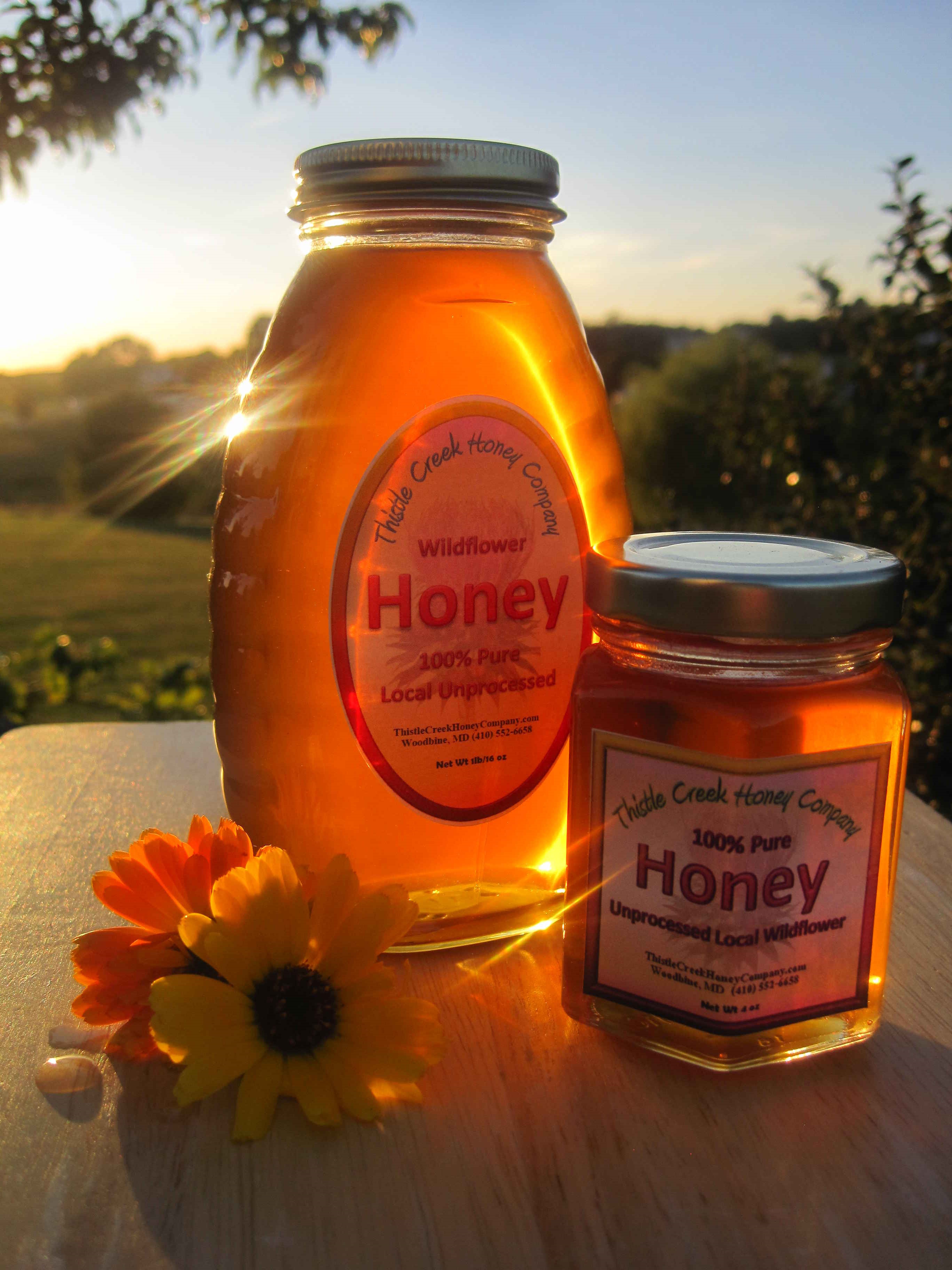
|
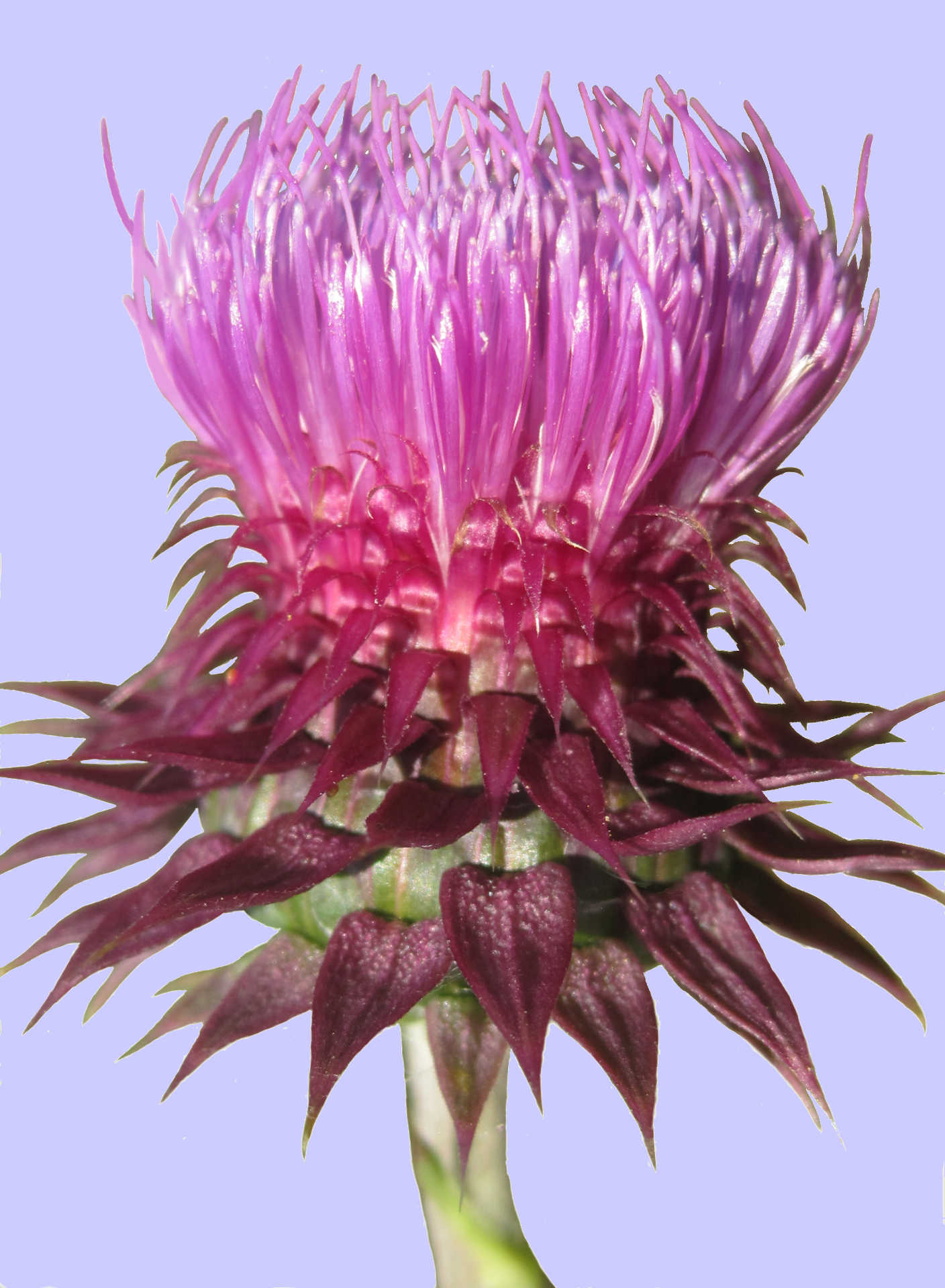






Liquid Sunshine
Honeybees
Managing 60,000 girls
Honey is liquid sunshine
| |
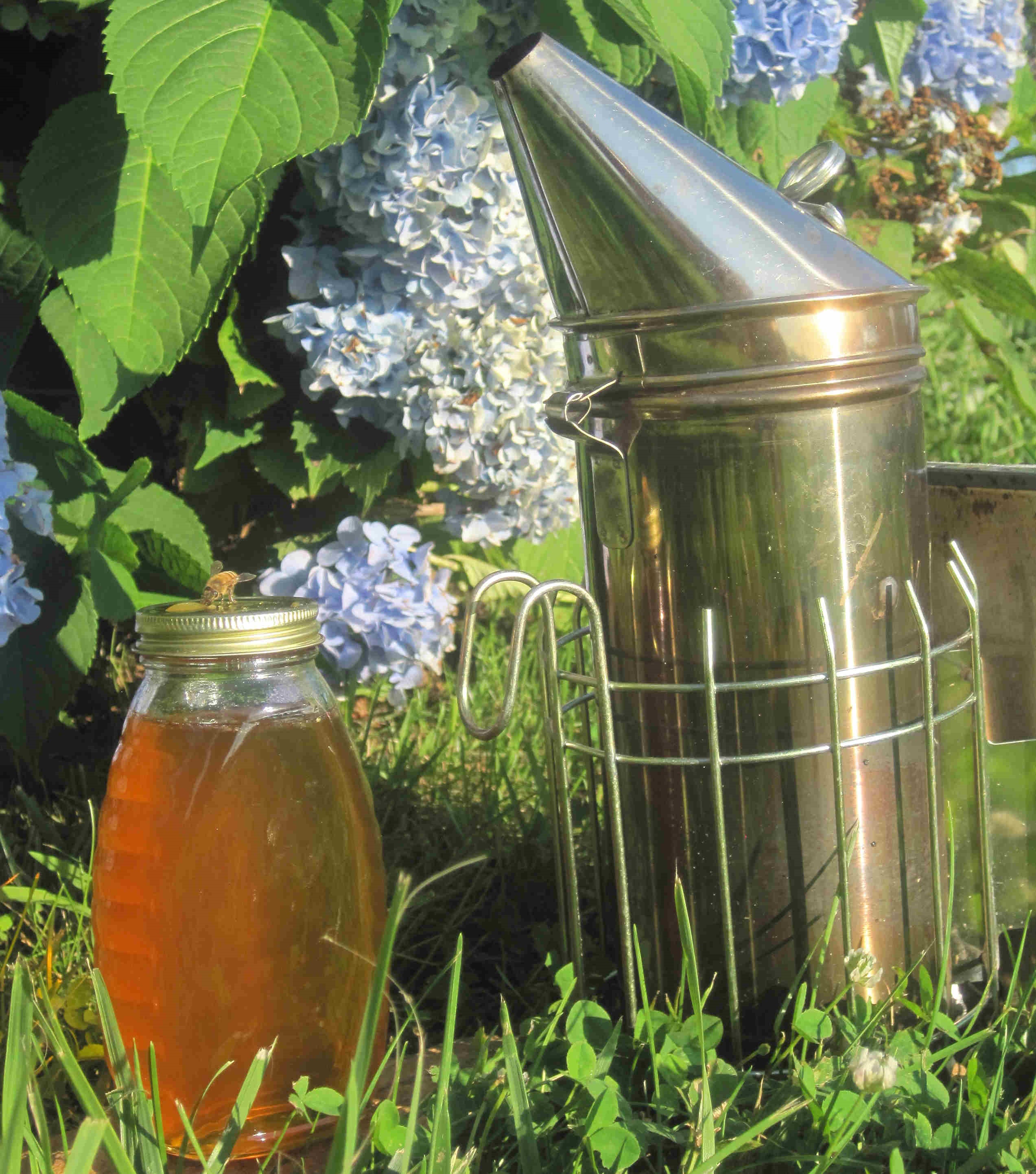
|
Itís hard to eat a spoonful of honey and not think of all the summertime flowers that are blended into that sweet nectar. Honey is the best sweetener out there.
It has the smallest carbon footprint since it requires no processing, unlike white sugar (reference), and doesnít have to be shipped across the world (it can come from your backyard).
|
|
| |
Honey is good for your local environment as honeybees actually improve the environment by pollinating plants to help them regenerate, year after year.
And best of all, it tastes better than any other sweetener, money back guaranteed.
Local honey has health benefits (reference 1, reference 2, reference 3),
a long history of use in wound healing, and skin care due to its water-loving humectant qualities. It is golden in so many way.
Honey starts out as nectar from flowers collected by worker bees which is then transferred to other worker bees assigned to hive duty. They store the nectar in geometrically perfect wax comb cells. During the next few weeks the nectar evaporates down to honey with help from the bees who fan the nectar with their wings. Once enough water has evaporated from the nectar, the bees cap the comb cells with wax for storage. If the bees have stored enough honey to get them through the winter, the beekeeper can then remove the excess comb and extract the honey. We have a picture book that shows the steps we go thru to get honey from our bees.
|
|
Honey does not go bad
| |
Iíve heard horror stories of people throwing out 5 lbs of honey because they thought it had gone bad when actually it had just crystalized. Local honey has traces of flower pollen in it because it is not heated and super-filtered like most of the honey you find on grocery shelves. The pollen gives the crystals a platform to build on, similar to the way crystals form around the string in the sugar water when you make rock candy. Crystalized honey is still tasty and usable. In fact, some people prefer it for baking and cooking. It will dissolve in tea just fine. Honey stored in the refrigerator crystalizes faster than honey kept at temperatures above 70 degrees. If you want to return crystalized honey to a liquid state, you can give it a hot bath by leaving it for a few hours in a pan filled with water heated to 100 degrees. If youíre in a hurry, you can microwave it. While microwaving wonít seriously change the flavor of the honey, it may destroy the enzymes found in local honey that some people seek out.
Please remember to never give honey to an infant (any child under 1 year of age).
|
|
Honeybees
| |
Even after we started beekeeping, we continued to read and learn about honeybees. They are fascinating little creatures. To really understand honeybees, you have to think of the entire colony as a single organism and not think of the individual bee. A colony or hive is made up of one queen, plus 50,000 or so worker bees (girls) and a handful of drones (guys). They all live and work together in the hive with a common goal of keeping the colony alive by collecting food and raising new baby bees.
A worker bee visits about 100 flowers a day. She collects about 2 teaspoons of nectar in her lifetime.
A male honeybee has only one duty in his sweet but short lifetime Ė to fertilize the queen. His slovenly bachelor ways are tolerated during the warm summer months but once the cold weather sets in and his usefulness has run its course he will be unceremoniously dragged out of the hive and left outside to die. Sorry guys, thatís the nature of a colony.
The continuation of the species isnít dependent on reproducing single bees, but on reproducing the colony. In the spring, a colony decides if it is healthy enough to split itself in half to form another colony. This is how the species reproduces and expands, by splitting the colony and sending one half out into the world to establish a new hive, a process known as swarming. If honeybees didnít swarm and create new colonies, the species would die out.
A swarm of bees may look alarming, but in reality since they do not have a hive to protect while they are swarming, the bees are docile and harmless at this point. If you ever see a swarm of bees, please call your local beekeeping association and they will be happy to send someone out to collect it, usually at no charge to you. A honeybee swarm is very valuable to a beekeeper.
|
|
Hons in Need
| |
For as long as humans have recorded their history, they have left evidence that they harvested honey. In Valencia, Spain, one of the earliest rock paintings ever discovered depicts a human figure from the Paleolithic Period (about 10,000 years ago) hanging from a cave wall collecting honeycombs. Is this age-old legacy of humans and honey about to end? Recently, there has been a lot of publicity about the decline of the honeybee species. You may have heard of Colony Collapse Disorder (CCD) that has devastated many beekeepersí hives.
Surveys, such as the one from BeeInformed.org, show that the number of colonies dying off is increasing every year.
|
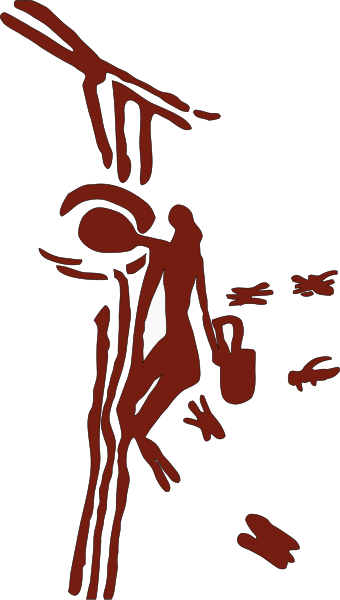
|
|
| |
While there is no clear indication of a single cause for the decrease in honeybee populations, most agree that mites, pesticides, Israeli virus (reference) and a lack of natural bee food (flowers) are major contributors. It hardly needs to be said that the disappearance of honeybees would be devastating to the many crops that rely on them for fertilization. About one-third of our food supply is directly or indirectly linked to honeybee pollination.
Some easy steps to help the honey bees are:
Eat more sweets (local honey). Itís the tastiest thing you can do to help make sure there are more bees around by supporting the people that support them.
Eat more sweets (local fruits). Fruit growers need bees for pollination. The more fruit they produce, the more bees they need.
Make honey, not war. Insecticides kill insects and honeybees are insects. Go easy on the poison.
Take a walk on the wild side. A weed-free lawn maintained with insecticides and weed killers is a dangerous wasteland for honey bees and other nectar loving creatures. Let go of the idea that a monoculture of grass is desirable and youíll have happier bees and butterflies. Clover is beautiful, good for the environment, good for the soil and good for the bees.
Start beekeeping. Anyone can do it. Even the White House has honey bees, and if our federal government is capable of managing bees, you can too.
|
|
Interested in Becoming a Beekeeper?
| |
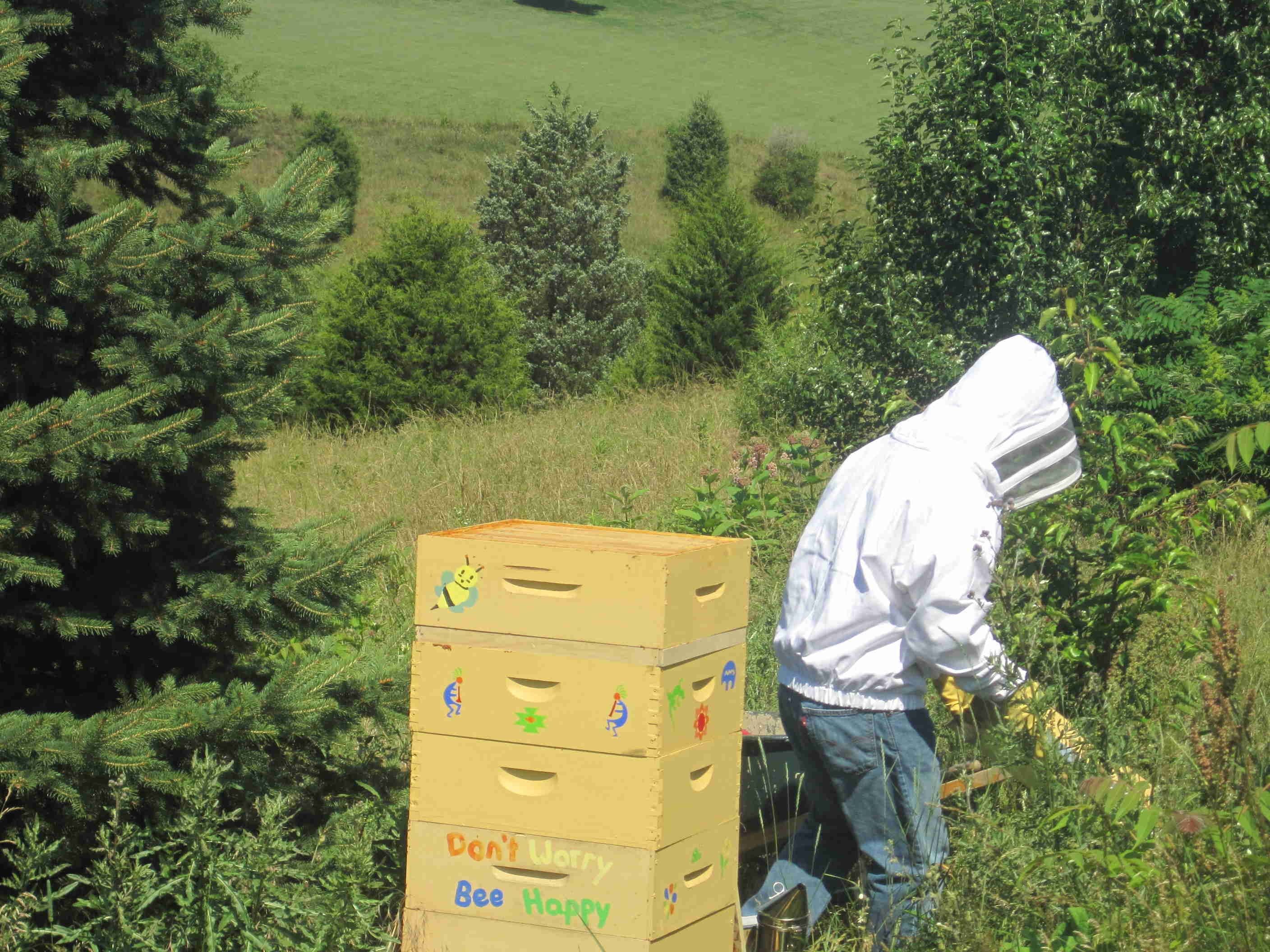
|
If you are interesting in starting beekeeping, there are two approaches you can take. The Type A person will want to join their local beekeepers association, take a course on beekeeping at a local school, order every item in the Brushy Mountain catalogue, take a vacation to Georgia to visit the various places that assemble packaged honeybees to start a hive, and then run DNA analysis on the queen to determine its purity. Type B will watch a 3-minute online video on beekeeping, use scrap wood to nail together a square box with a hole in it, find someone selling packages of bees, dump them into the box and check on them sometime in the fall.
|
|
| |
Both approaches can work with varying degrees of success. I always look at beekeeping like gardening and many other things in life, the more time and thought you put into it, the more successful you will be. Every beekeeper needs to find the right balance of effort and reward that fits his or her personality.
Here are some simple steps you can take to start beekeeping:
Find a local beekeeping association (beekeepers associations). They can help you find a course to take and local suppliers.
Take a short course on beekeeping at a local college.
Watch some Youtube videos of beekeepers installing packages and inspecting hives.
Find someone in the area that you can tag along with on an inspection to get familiar with hives.
Find a local vendor to purchase a package of bees and supplies.
Read through some internet sites on starting beekeeping (good site for beekeepers)
|
|
Movies involving beekeeping
| |
Uleeís Gold -> Not a movie about beekeeping, but the main character is a beekeeper. It converted me.
Vanishing of the Bees -> focuses mainly on, well, the vanishing of the bees.
More than Honey -> focuses mainly on, well, the vanishing of the bees. Some good macro videos of hons. Some long scenes in foreign language. I preferred Vanishing of the bees.
Queen of the Sun -> More of the same
YouTube TED Talk -> TED Speach and then some amazing high speed footage of pollinators.
|
|
Beeswax and Other Products of the Hive
| |
Beeswax: Honeybees produce a wax they use to construct comb that they use to raise babies and store honey in. When we extract honey, we filter and melt down the beeswax for use in our products. We prefer our own beeswax as many beekeepers use various chemicals to manage their hives, while we use none. Nor do we use any chemical to bleach the wax. This gives us more comfort when our family member use our balm on their lips. Beeswax is also better for candles. It burns brighter and cleaner than paraffin candles, which release toxins in the air due to its petroleum origins.
Propolis: Propolis is a very sticky substance that honeybees create to seal up their hives. It also provides an antibiotic barrier for the hive. When honeybees collect sap to make propolis, they usually select trees whose sap has anti-microbial properties. The anti-microbial property of propolis is why people have been using it for years.
Royal Jelly: Royal jelly is a milky substance produced by worker bees. It contains a single protein that when fed to a bee larva causes it to become a queen. Some people believe royal jelly is useful in skin care products as an anti-aging ingredient but this has not been substantiated. In fact, there is very little scientific information available about any of the acclaimed health benefits of royal jelly. Allergic reactions to royal jelly are common. Most royal jelly supplements are produced in China.
Bee Venom: Apitherapy is the use of honeybee products for medical purposes. One of the more common apitherapy methods involves getting stung by bees for various ailments, like arthritis. No one should ever start bee venom apitherapy without consulting a doctor and determining your allergic sensitivity to bee venom. Many people are allergic to bee venom and can have serious reactions to a bee sting. There isnít a lot of scientific studies supporting this practice, but there is plenty of anecdotal evidence. No one has studied venom therapy to exactly say why it works, but the general consensus is focused on the venom transferring some anti-inflammatory compounds and the bodyís reaction to the toxins. When a person is stung, the body produces a whole host of compounds to combat the bee venom and those compounds help the symptoms of arthritis or other immune disorders.
|
|
|
|